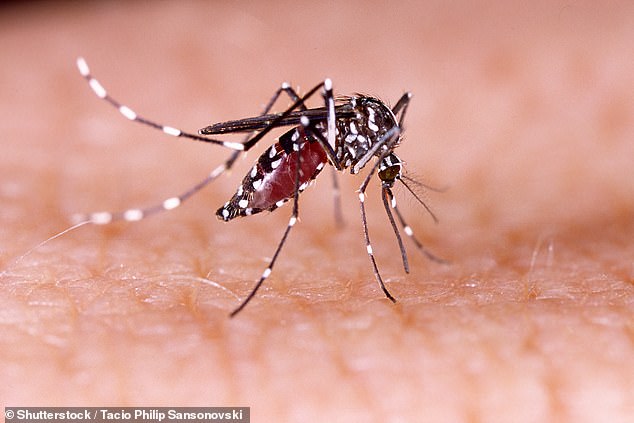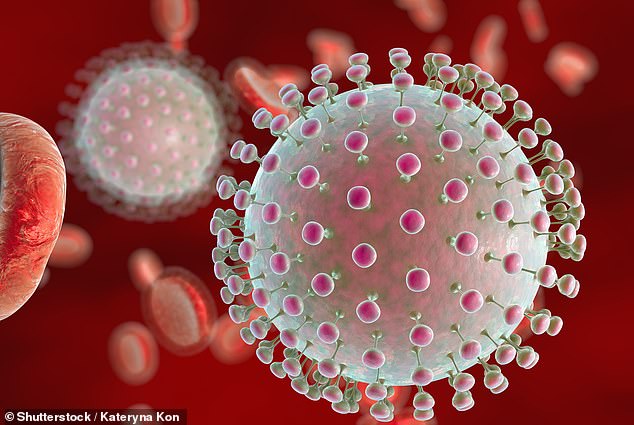How the Zika virus is being harnessed to treat one of the world’s deadliest cancers
Scientists hope to turn a deadly African virus into a therapy for one of the world’s deadliest cancers.
The Zika virus is a mosquito-borne infection that reduces levels of the developmental protein CD24, which forms in excessive amounts in patients with certain cancers.
A team of researchers in Florida has shown that this same mechanism can destroy, kill and destroy tumors known as neuroblastomas.
In a study in mice, the virus caused a “near total loss of tumor size,” and tumors in mice given the highest dose of virus were completely eliminated.
These account for one in seven childhood cancer deaths, but there has been no treatment for more than 40 years.
Dr. Matthew Davis of Nemours Children’s Health in Florida, who conducted the study, said the team is “at the forefront of potentially life-saving cancer treatment.”

The Zika virus is commonly spread through mosquito bites, between people during unprotected sex, and from pregnant mothers to their children. Researchers at Nemour Children’s Health in Florida found that it could reduce neuroblastoma tumors in mice


Patients with neuroblastoma have high levels of the protein CD24. This is also the protein Zika targets (pictured here)
‘We are hopeful that this study will pave the way for improved survival of patients with neuroblastoma.’
Cancers such as neuroblastoma produce high levels of CD24, a developmental protein.
Zika has also been shown to target and reduce proteins. In patients with healthy CD24 levels, this has previously led to birth defects such as microcephaly.
However, in patients with high CD24 levels, Zika was found to reduce these levels. This resulted in the tumor size becoming smaller.
Neuroblastoma is a type of blastoma that forms in the developing cells of a fetus or child.
Although blastomas are most common in children, they can also affect adults. For example, John McCain suffered from glioblastoma, a brain cancer that suppresses the immune system.
Dr. Tamarah Westmoreland, study author and associate professor of surgery at Nemour Children’s, said: ‘These patients are in urgent need of new treatment options.
The team studied mice with neuroblastoma tumors that express high levels of the developmental protein CD24.
This is the same protein that is targeted by the Zika virus, which can lead to developmental disorders in babies such as microcephaly, which causes a baby’s head to be much smaller than expected.
Half of the mice were injected with saline, while the rest were injected with Zika. Tumor sizes were monitored three times a week for four weeks.
In mice given the highest dose of Zika, their tumors completely disappeared and showed no sign of recurrence after four weeks.
Meanwhile, tumors in mice given the saline solution had grown by as much as 800 percent.
Dr. Matthew Davis, Executive Vice President and Chief Scientific Officer at Nemours Children’s, said, “Neuroblastoma is often a very challenging diagnosis, especially for patients who are unlikely to respond well to chemotherapy.”
However, the team cautioned that using Zika as a cancer therapy would require additional studies to determine whether the treatment is safe. The researchers plan to conduct further studies before proceeding to clinical trials.
Dr. Joseph Mazar, study author and research scientist at Nemour Children’s, said: ‘With further validation, Zika virus could be a highly effective bridge therapy for patients at high risk for neuroblastoma.’
‘We also see potential that the Zika virus could be used to treat children and adults with other cancers that express high levels of CD24.’
Neuroblastoma develops from immature nerve cells that form in various parts of the body, although it most commonly begins in the adrenal glands, which sit on top of the kidneys.
Symptoms include abdominal pain, a mass under the skin, changes in bowel habits, wheezing, chest pain, back pain, eyes that protrude from their sockets, fever, and bone pain.
Neuroblastoma usually occurs in children under 5 years of age. There are about 700 to 800 cases per year.
The research was published in the journal on Tuesday Communication about cancer research.
